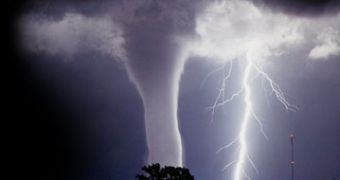The International Council for Science (ICSU) has recently thought of an international program that would facilitate a more adequate approach to preventing natural disasters, diminishing their negative effects and repairing the damage they cause. The project will join scientific fields of all types in a common humanitarian endeavor that will save many lives. Its founding was announced during the 29th General Assembly of the ICSU in Maputo, Mozambique.
Natural calamities are far more frequent recently than half a century ago, according to studies, their number rising from 30 to about 470 such events taking place yearly. And each year, these disasters cause thousands or even up to millions of victims worldwide. The number grows even bigger if, besides those who lose their lives or are severely injured, people who lose their homes and other properties in the process are also counted. That is why the need for such a prevention program became ever more solid and urgent.
According to Canadian climatologist Gordon McBean, Chair of the International Council for Science's Planning Group for Hazards, “Integrated Research on Disaster Risk (IRDR) will provide an enhanced capacity around the world to address hazards and make better decisions to reduce their impacts. In 10 years, as a result of this programme, we would like to see a reduction in loss of life, fewer people adversely impacted, and wiser investments and choices made by governments, the private sector and civil society”.
The IRDR project will address all kinds of catastrophes, such as environmental, geophysical or human caused or aggravated ones, but also less likely phenomena that could have a major impact on human health or life, such as space weather or even near-Earth objects with increased impact probability. In order to provide the best solutions, the project will be based on existing programs and technologies, and will involve a global interdisciplinary expertise, as well as a case study that will point out the causes for disasters, possible mistakes made and the proper model actions that should be followed.

 14 DAY TRIAL //
14 DAY TRIAL //